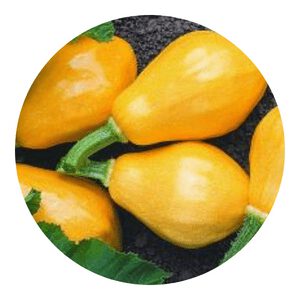Step-by-step guide to crop rotation in organic vegetable gardens
Organic vegetable gardens are becoming increasingly popular as the demand for fresh, homegrown produce rises.
Growing and maintaining an organic vegetable garden is no easy feat; however, with some knowledge and effort, your garden can thrive!
One of the most important aspects of organic gardening is crop rotation – a practice that has been used for centuries to improve soil health and prevent pests and diseases from taking over.

Crop Rotation Menu
Crop rotation
Crop rotation is a key element of organic vegetable gardening, allowing for soil fertility and pest control.
Crop rotation involves planting different crops in the same area of land from year to year, with each crop getting its turn in the soil.
This practice ensures that nutrients are replenished and pests don’t become too established in one location.
It also helps to break weed cycles and prevent diseases from becoming widespread. As an added bonus, it can even increase yields while keeping gardeners’ workloads manageable.
With this guide, gardeners will have all the information they need to develop their own crop rotation plan that works best for their unique garden environment.
Importance of crop rotation in organic vegetable gardens
Crop rotation is a powerful gardening practice that can be used to maintain healthy soil, reduce pest and disease pressure, and maximize yields in organic vegetable gardens.
Following a crop rotation plan helps to ensure that nutrients are replenished, weeds are kept in check, and money spent on fertilizer is minimized.
Crop rotation works by alternating vegetables with different nutrient needs from year to year.
This prevents soil depletion of any particular nutrient while breaking the life cycle of pests and diseases.
Rotating crops also helps to prevent weeds from taking hold by removing the conditions they require for growth or reproduction.
A step-by-step guide can help gardeners understand how to effectively rotate their crops so they can get the most out of their organic vegetable gardens.
Benefits of crop rotation
Crop rotation is a practice that has been used for centuries in organic vegetable gardening and is essential for maintaining soil health and increasing crop yields.
The following are some of the key benefits of crop rotation:
Soil fertility: By rotating crops with different nutrient requirements, gardeners can prevent soil depletion and improve soil fertility.
For example, legumes such as peas and beans add nitrogen to the soil, which is essential for healthy plant growth.
Pest and disease management: Crop rotation helps reduce the buildup of soil-borne diseases and pests by preventing crops from being grown in the same location year after year.
This reduces the risk of diseases and pests becoming established in the soil, making it less likely that they will harm future crops.
Improved crop yields: By rotating crops, gardeners can take advantage of different soil nutrients, leading to improved plant growth and increased crop yields.
Crop rotation also helps improve soil structure and reduces soil compaction, which can lead to better root development and more efficient use of soil resources.
Weed control: By alternating crops, gardeners can disrupt the growth cycle of weeds, making it more difficult for them to establish themselves in the garden.
This reduces the need for mechanical weed control methods, such as hoeing or tilling, which can be time-consuming and labor-intensive.
Biodiversity: By rotating crops, gardeners can encourage a diverse range of plants and animals in the garden, which can lead to increased soil fertility, improved pest and disease management, and a more sustainable garden ecosystem.
Overall, crop rotation is an important practice for organic vegetable gardening, offering numerous benefits for soil health, pest and disease management, and improved crop yields.
Gardeners should plan their crop rotation carefully and make adjustments as needed based on local growing conditions and personal preferences.
Crop families and rotation groups
Organic vegetable gardens have become increasingly popular over the years as people look for ways to grow fresh, healthy produce without relying on potentially harmful chemicals and fertilizers.
One important aspect of successful organic gardening is crop rotation, which involves planting different crops in a particular area from season to season.
Crop families are groupings that contain plants that require similar growing conditions and have similar nutritional needs.
For example, alliums (onions, shallots, garlic) and brassicas (broccoli, cabbage, kale) both belong to the same family because they can be planted in the same soil type and thrive under similar conditions.
Crop rotation helps keep organic gardens strong. Each season comes with its own change of song. Fall squash and winter cabbage will we grow, While spring shows its promise of favorite tomatoes. Summer brings us carrots and beans galore, Allowing us to make meals aplenty more. In our garden rotation never lags, Providing us bountiful harvests in bags!
Chappy The Gardener
Planning Your Crop Rotation
Planning your crop rotation is an important step to ensure successful organic vegetable gardening.
Crop rotation helps to prevent disease, reduce pest pressure and improve soil fertility, making it one of the most valuable tools for any organic gardener.
Crop rotation involves systematically planting different crops in each area of the garden over multiple seasons.
Different crops require different nutrients and have varying susceptibilities to pests and diseases, which can be managed effectively with a good crop rotation system.
Planning ahead and understanding how long crops should remain in one area will help you achieve maximum productivity from your garden while avoiding potential problems caused by overcrowding or nutrient deficiencies.
Understanding your soil and climate
Understanding your growing conditions can help you make informed decisions about what crops to grow and when to grow them, leading to healthier soil, increased crop yields, and a more sustainable garden.
Soil: Understanding your soil type and fertility is key to successful crop rotation.
Test your soil regularly to determine pH, nutrient levels, and organic matter content, and adjust your rotation plan accordingly.
If your soil is nutrient-poor, for example, you may want to incorporate crops into your rotation that will add specific nutrients back into the soil, such as legumes that add nitrogen.
Climate: Understanding your local climate and growing season is also important when planning a crop rotation.
Consider factors such as temperature, rainfall, and day length, and choose crops that will thrive in your specific climate.
For example, if you live in a hot, dry climate, you may want to choose crops that are drought-tolerant and can withstand high temperatures.
Disease and pest pressure: Understanding disease and pest pressure in your area is also important when planning a crop rotation.
For example, if a particular disease is prevalent in your area, rotating crops and avoiding planting the same crops in the same location year after year can help reduce the risk of disease and improve the health of your soil.
By understanding your soil and climate, you can make informed decisions about what crops to grow and when to grow them, leading to a more sustainable and successful organic vegetable garden.
Regular soil testing, observation of weather patterns, and tracking of pest and disease pressure can help you make adjustments to your rotation plan as needed, ensuring the best results for your garden.
Deciding on crop rotation groups
When deciding on crop rotation groups for your organic vegetable garden, it’s important to consider the different needs of different crops and how they can impact soil health.
Here are some tips for deciding on crop rotation groups:
Group crops by family: Crops are typically grouped by family based on their similar growth habit and nutrient requirements.
Common families include alliums (onions, garlic, leeks), brassicas (cabbage, broccoli, cauliflower), legumes (peas, beans, lentils), solanaceous crops (tomatoes, peppers, eggplants), and cucurbits (squash, cucumbers, melons).
Consider nutrient requirements: Different crops have different nutrient requirements, and rotating crops can help improve soil health by ensuring that the soil has time to recover between crops.
For example, legumes are known to add nitrogen to the soil, while brassicas are known to consume large amounts of nitrogen, so rotating legumes with brassicas can help improve soil health.
Consider disease and pest pressure: Different crops are susceptible to different diseases and pests, and rotating crops can help reduce the risk of disease and pest outbreaks.
For example, rotating crops that are susceptible to the same diseases or pests, such as tomatoes and peppers, can help reduce the risk of disease and improve the health of your soil.
Consider crop length: When deciding on crop rotation groups, consider the length of time each crop will be in the ground.
Long-season crops, such as tomatoes, peppers, and eggplants, should be rotated with short-season crops, such as lettuce, spinach, and radishes, to ensure that the soil has time to recover.
By considering these factors when deciding on crop rotation groups, you can help improve soil health, reduce pest and disease pressure, and increase crop yields in your organic vegetable garden.
Regular soil testing, observation of weather patterns, and tracking of pest and disease pressure can also help you make informed decisions about crop rotation groups.
Creating a crop rotation plan
Here’s how to create a crop rotation plan for your organic vegetable garden:
Determine the number of years in your rotation: Most crop rotation plans are either three or four years long.
The length of your rotation will depend on the size of your garden and the number of different crops you want to grow.
Group crops by family: Crop rotation works best when crops are grouped by family.
Common families include alliums (onions, garlic, leeks), brassicas (cabbage, broccoli, cauliflower), legumes (peas, beans, lentils), solanaceous crops (tomatoes, peppers, eggplants), and cucurbits (squash, cucumbers, melons).
Plan your rotation: Based on the number of years in your rotation and the crop families you want to grow, create a rotation plan.
For example, if you have a four-year rotation, you might plant alliums in year one, brassicas in year two, legumes in year three, and solanaceous crops in year four.
Consider crop length: When planning your rotation, consider the length of time each crop will be in the ground.
Long-season crops, such as tomatoes, peppers, and eggplants, should be rotated with short-season crops, such as lettuce, spinach, and radishes, to ensure that the soil has time to recover.
Make adjustments: Be prepared to make adjustments to your rotation plan as needed.
Factors such as weather, pest and disease pressure, and soil conditions may impact the success of your rotation, and you may need to make changes to your plan to ensure the best results.
By following these steps and creating a crop rotation plan, you can help improve soil health, reduce pest and disease pressure, and increase crop yields in your organic vegetable garden.
Regular soil testing, observation of weather patterns, and tracking of pest and disease pressure can also help you make adjustments to your rotation plan as needed.
Tips for successful crop rotation
Here are some tips for successful crop rotation in your organic vegetable garden:
Plan ahead: Before planting, take the time to plan your crop rotation. Consider the different plant families, their nutrient requirements, and the length of time each crop will be in the ground.
A typical rotation plan is 3 to 4 years, but you may need to adjust based on your specific gardening conditions.
Keep records: Keep detailed records of what you plant each year, including the location, date, and type of crop.
This will make it easier to keep track of your rotation plan and make any necessary adjustments.
Group crops by family: Crop rotation works best when crops are grouped by family, as different families have different nutrient requirements and can impact the soil differently.
Common families include alliums, brassicas, legumes, solanaceous crops, and cucurbits.
Avoid back-to-back planting: Avoid planting the same crop family in the same location two years in a row.
This helps reduce the buildup of soil-borne diseases and pests and allows the soil to recover between crops.
Consider crop length: Consider the length of time each crop will be in the ground when planning your rotation.
Long-season crops, such as tomatoes, peppers, and eggplants, should be rotated with short-season crops, such as lettuce, spinach, and radishes, to ensure that the soil has time to recover.
Make adjustments: Be prepared to make adjustments to your rotation plan as needed.
Factors such as weather, pest and disease pressure, and soil conditions may impact the success of your rotation, and you may need to make changes to your plan to ensure the best results.
By following these tips and incorporating crop rotation into your organic vegetable garden, you can improve soil health, reduce pest and disease pressure, and increase crop yields.
Examples of Crop Rotation in Organic Vegetable Gardens
Here are some examples of effective crop rotation techniques for organic vegetable gardens.
The first step in establishing an effective crop rotation plan is to group vegetables according to their family or genus.
Common families include root vegetables such as potatoes, carrots and onions; cabbage family crops such as broccoli, cauliflower, cabbage and kale; legumes like beans or peas; tomatoes; squash and cucumbers; corn; greens such as lettuce or spinach; beets and radishes; herbs like basil or cilantro; garlic and shallots.
4-year crop rotation plan
Crop rotation is a crucial practice in organic vegetable gardens for maintaining soil health, reducing pest and disease pressure, and improving crop yields.
Here is a 4-year crop rotation plan for a typical organic vegetable garden:
Year 1: Root crops (carrots, parsnips, beets, etc.) and alliums (onions, garlic, leeks, etc.)
Year 2: Brassicas (cabbage, cauliflower, broccoli, etc.) and legumes (peas, beans, lentils, etc.)
Year 3: Solanaceous crops (tomatoes, peppers, eggplants, etc.) and cucurbits (squash, cucumbers, melons, etc.)
Year 4: Leaves and stems (lettuce, spinach, chard, etc.) and cereals (corn, wheat, barley, etc.)
This rotation plan ensures that each group of crops is grown in a different location from the previous year, which helps reduce the buildup of soil-borne diseases and pests.
The different plant families also have different nutrient requirements, which helps prevent soil depletion and improves soil fertility.
Additionally, the rotation of nitrogen-fixing legumes helps to add nitrogen to the soil, which is essential for healthy plant growth.
It is important to note that this rotation plan is just a guide, and adjustments may be necessary based on local growing conditions, garden size, and personal preferences.
3-year crop rotation plan for a small garden
Here is a 3-year crop rotation plan for a typical organic vegetable garden:
Year 1: Root crops (carrots, parsnips, beets, etc.) and alliums (onions, garlic, leeks, etc.)
Year 2: Brassicas (cabbage, cauliflower, broccoli, etc.) and solanaceous crops (tomatoes, peppers, eggplants, etc.)
Year 3: Legumes (peas, beans, lentils, etc.) and cucurbits (squash, cucumbers, melons, etc.) and leaves and stems (lettuce, spinach, chard, etc.)
This rotation plan ensures that each group of crops is grown in a different location from the previous year, which helps reduce the buildup of soil-borne diseases and pests.
The different plant families also have different nutrient requirements, which helps prevent soil depletion and improves soil fertility.
Additionally, the rotation of nitrogen-fixing legumes helps to add nitrogen to the soil, which is essential for healthy plant growth.
Companion planting with crop rotation
Crop rotation and companion planting are two effective strategies for organic vegetable gardening.
By combining these techniques, gardeners can optimize soil health, reduce pest and disease pressure, and increase crop yields.
In companion planting, different plant species are grown together in close proximity to provide mutual benefits.
For example, plants that deter pests, such as marigolds, can be planted near vegetable crops to provide natural pest control.
Nitrogen-fixing legumes, such as beans, can be planted with other vegetables to improve soil fertility.
By incorporating companion planting into a crop rotation plan, gardeners can enhance the benefits of both practices.
For example, a 3-year crop rotation plan could include companion planting as follows:
Year 1: Root crops (carrots, parsnips, beets, etc.) and alliums (onions, garlic, leeks, etc.) with marigolds for pest control.
Year 2: Brassicas (cabbage, cauliflower, broccoli, etc.) and solanaceous crops (tomatoes, peppers, eggplants, etc.) with nasturtiums for pest control and trap cropping.
Year 3: Legumes (peas, beans, lentils, etc.) and cucurbits (squash, cucumbers, melons, etc.) and leaves and stems (lettuce, spinach, chard, etc.) with borage for pollination and pest control.
It is important to note that the benefits of companion planting vary depending on local growing conditions and the specific plants involved, and that some combinations may not be suitable.
In conclusion, crop rotation is a crucial process for maintaining the health of an organic vegetable garden.
It can help to improve soil fertility, reduce pest and disease issues, and increase crop yields over time.
Crop rotation also helps to break the life cycle of certain pests and diseases, making it a vital part of any sustainable organic garden.
With careful planning and regular monitoring, growers can ensure that their gardens remain healthy and productive year after year.
Click To Grow
Helps Us Grow – Share If You Like



















